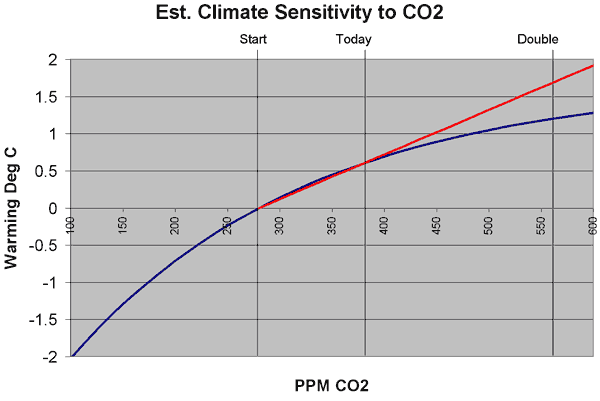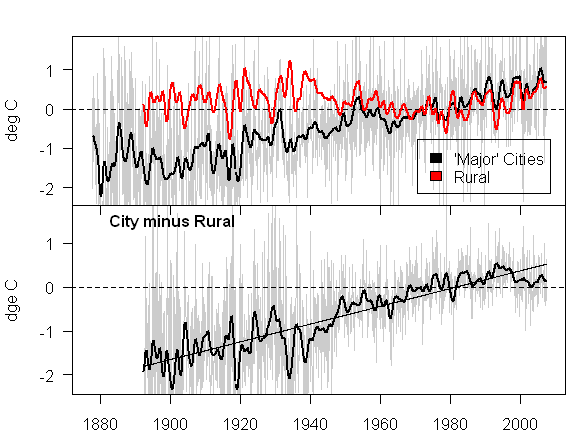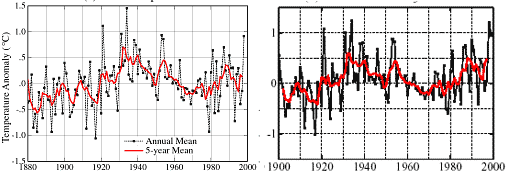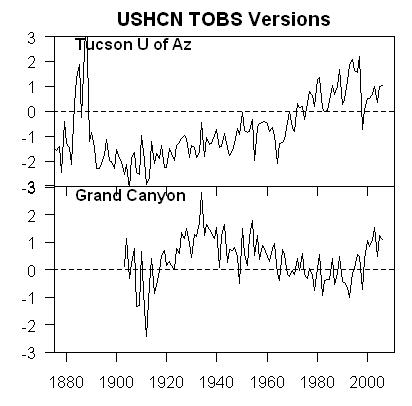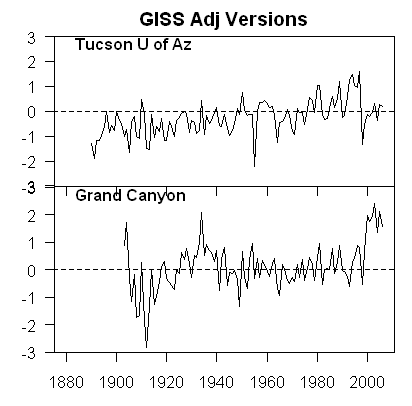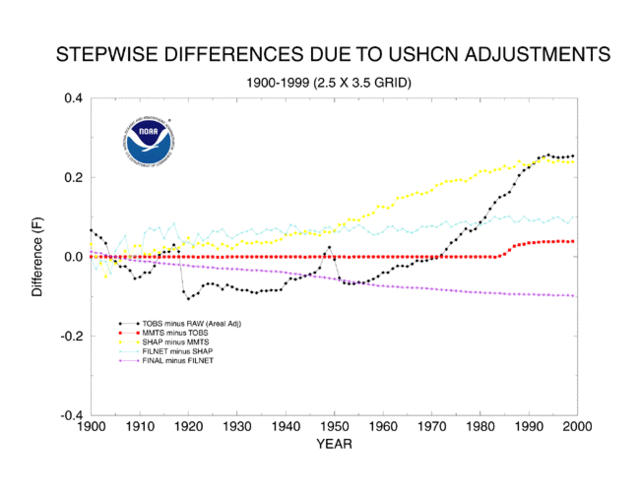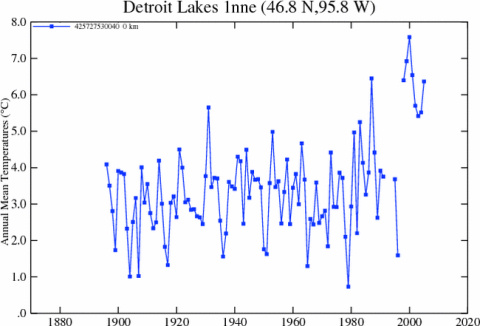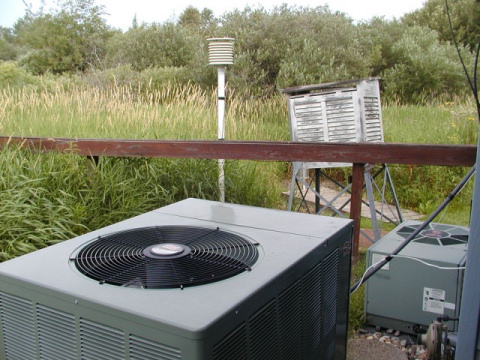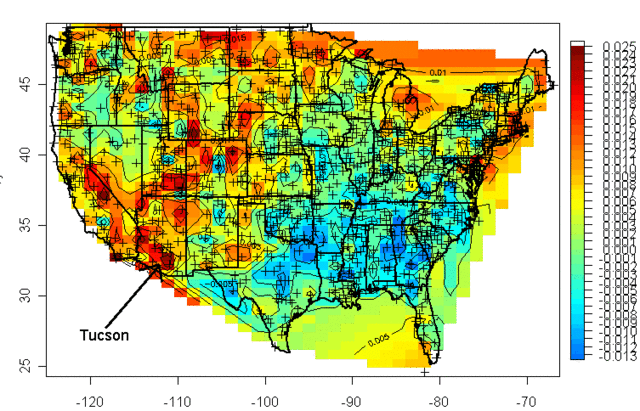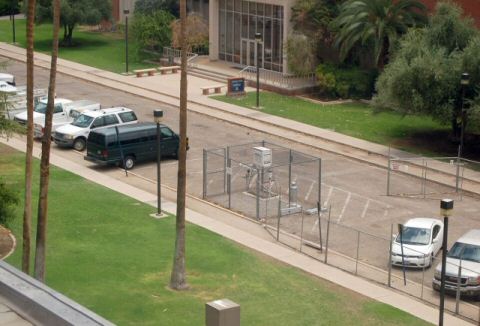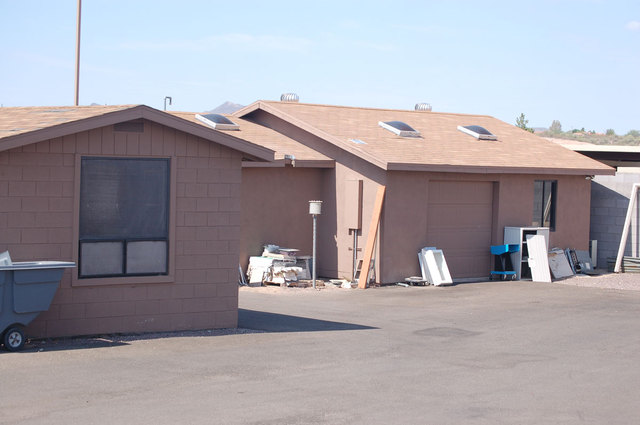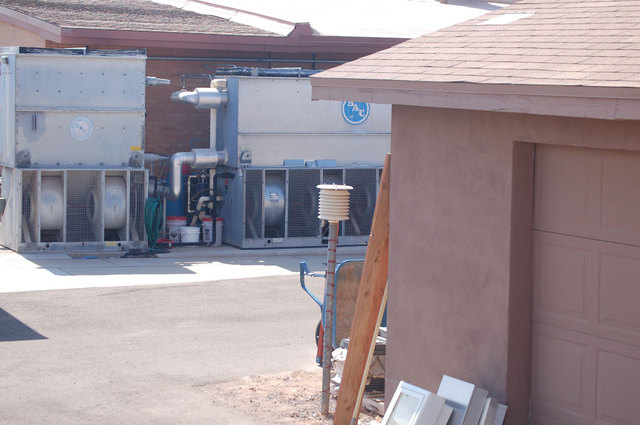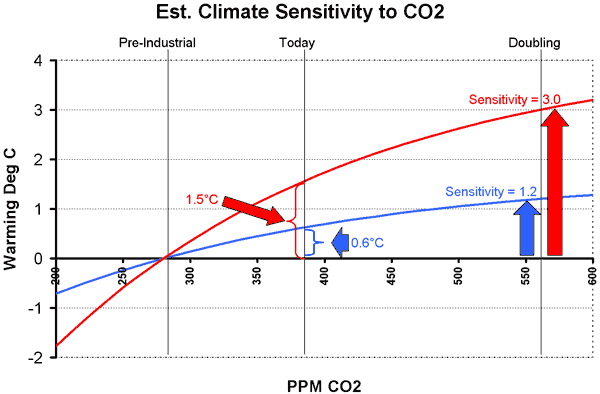Today I read one of the most bizarre articles I have read in quite a long time. Murray Whyte of the Toronto Star (HT: Junk Science) seems to have developed a fantasy that climate change will drive people out of Arizona and back to Cleveland, Buffalo and Toronto. Uh, yeah. The article is laden with shoddy science, gross contradictions, bad economics, and a recurrent envy of wealth and success. The article is so much of a mess that I just can't resist fisking it in detail, despite its length.
Before I begin, though, I am not necessarily a huge Arizona booster. Phoenix works pretty well for me at this point in my life, but I have lived in many great places. And I am the last one to criticize anyone who decides that they just can't live in a place where it is 110F for 6 weeks straight. That being said, lets get into it. The article is titled:
Climate Change Herald Mass Migration: Concerns
raised as the U. S. Southwest grapples with historic drought, water
supply depletion and the creeping sense that things can only get worse.
We will get into all this later, but you gotta love the "creeping sense that things can only get worse." Who has this sense, other than the author? Phoenix is one of the most optimistic and positive places I have ever lived.
The state of Arizona has more than 300 golf courses, a booming economy,
endless sunshine and, at last count, at least five Saks Fifth Avenue
department stores "” in short, nearly everything the well-heeled
sybarite would need.
He sets the tone right up front. This article is not about climate or rain or anything else. It is about envy and a distaste for other people's wealth and success.
There's just one thing missing: rain.
For the past
month, not a drop has fallen in Maricopa County, home to greater
Phoenix, the state's economic engine and fastest-growing hub. Over that
period, temperatures have hovered five to seven degrees above the
30-year average, at one point holding steady at over 43C for 10
straight days, while hundreds of brush fires burned statewide.
Its the freaking Sonoran desert! We go months without rain. We are supposed to go months without rain. We average like 8 inches a year. This county went months at a time without rain long before human beings burned their first molecule of fossil fuels. If we got much more rain than this, all of our Saguaro cactuses would die.
And 43c is 109F. We almost always go 4-6 weeks with temperatures over 109. And he is saying this is 6C (10F) more than normal. Get real! I can't remember any June or July we ever went even 5 straight days under 100F during this part of the summer. By the way, Arizona's highest June temperature was recorded in 1994, its highest July temperature in 1905, and its highest August temperature in 1933. So much for record highs of late. (Maybe one reason it seems to be getting hotter is that they are measuring the temperature of asphalt parking lots).
"And they're still building billion-dollar houses, right in the
middle of the desert," says Paul Oyashi, incredulous. "It doesn't seem
rational, does it?"
Holy Crap! Billion dollar houses! Our retractable roof football stadium didn't cost a billion dollars, Canadian or US. Oh, and you see that having gone 4 paragraphs without being snide about wealth, he needed to get back to this topic. And who the $%@!! is Paul Oyashi?
In a word, no. Rational, some would say,
would be a mass migration from the drought-ravaged American southwest,
where Southern California just experienced its driest 12-month period
in recorded history, to more verdant climes.
One such place?
Cleveland, the battered hub of Cuyahoga County, where Oyashi sits as
director of the department of development. "We don't have earthquakes,
we don't have brush fires, we've got all the fresh water you could ever
want," Oyashi says. "That's logic. But the problem is, it flies in the
face of reality."
So this Oyashi guy is the development guy for Cleveland? Who made the Toronto Star a shill for the Cleveland chamber of commerce? Is it really this writer's premise that we are on the verge of a reverse migration from Phoenix to Cleveland? My sense is that we are not on the verge of such a reverse migration, and this is a chance for everyone in the Rust Belt to lament that fact.
At first glance, the crises
of the rust belt and the Southwest would seem unrelated. They are, in
fact, inexorably linked. Each has what the other does not. In Phoenix,
tremendous affluence; in Cleveland, and in Detroit, Toledo, Youngstown,
Buffalo, Rochester, Thunder Bay and Sault Ste. Marie, abundant,
near-endless water "“ in the Great Lakes alone, as much as 25 per cent
of the world's supply.
Note the writer implicitly accepts the zero-sum wealth fallacy -- in his eyes, wealth is a natural resource just like water. Cleveland has water, Phoenix has wealth. I won't get into this fallacy much here, but suffice it to say wealth is not something that springs magically from a well. More here. For a hundred years, Cleveland was a wealth-creation machine. To the extent they are not today, they might check their tax and regulatory policies.
And as the Southwest and parts of the
Southeast grapple with historic drought, water supply depletion "“
earlier this year, Lake Okeechobee in Florida, a primary water source
for the Everglades, caught fire "“ and the creeping sense that, with
climate change, things can only get worse, a new reality is dawning:
that logic, finally, will have a larger role to play in human migratory
dynamics, continent-wide. With it come not just doomsday scenarios, but
for certain urban centres left for dead in the post-industrial
quagmire, a chance at new life.
Wow, where to start? Anyone note the irony of Cleveland pointing fingers at someone because their lake caught on fire? Not that he bothers to explain why a lake catching on fire is related to climate change or even drought. And why on an article on the Southwest is the only example of water shortage taken from Florida?
But what you really need to note is the arrogant technocratic bent of the author. He is saying that all you idiots in Phoenix are defying reality, and that finally maybe you will start making the right choices. This is typical elitist crap. In the author's world, anyone who makes a choice the author would not is making a wrong choice.
"Sticking a straw in the Great
Lakes is not a solution to Phoenix's water problems," says Robert
Shibley, director of the Urban Design Project at the State University
of New York at Buffalo. "Maybe it's time to really think about what
constitutes need and stop spending money to build carrying capacity in
places that don't have it by nature, and start investing in places that
do."
Shibley has long been a champion of Buffalo's dormant
potential "“ a potential reduced by half or more through the latter part
of the 20th century, as the population fell below 300,000 from a
historic high of more than 700,000.
OK, now we quote a second guy about problems in the American Southwest. This guy is from Buffalo, New York and is a promoter of the city of Buffalo. Why is the Toronto Star giving these guys paid advertising for their causes under the guise of a news article? And who the hell ever suggested sending water from the Great Lakes to Phoenix? This is a "straw" man if I ever heard one. Even if we started building pipelines east, there would be no reason to go past the Missouri or Mississippi.
And I love this "investing in carrying capacity" thing. What the hell does that mean? Yeah, we have to build infrastructure when the city grows. We have to look for water, you have to pay for snow plows. To build in the desert, we have to pipe in water to survive. So what? Buffalo and Toronto and Cleveland have to truck or pipe in coal and heating oil in the winter to survive. What's the difference?
He suggests that in the
Great Lakes basin, where less than half a per cent of the world's
population sits within easy reach of a quarter of the planet's fresh
water, the opportunity for harmony exists. In a perfect world governed
by reason, Shibley says, the only robust economic centre in the region
would serve as its heart. And that would be Toronto.
Oh my God, what a statement. Humanity's last hope to live in harmony with nature is to move to the Rust Belt, home of a disproportionate number of America's Superfund sites and the burning Coyahoga River. These are cities that still use the Great Lakes as a toilet, dumping tons of raw sewage out in the lakes every day.
That's an
issue for international bureaucrats to solve. But the reality is this:
according to the U.S. government, the population of the United States
is expected to reach 450 million by 2050 "“ an increase of almost 50 per
cent. The predicted pattern of settlement for these new citizens will
take them to the seven most built-out regions of the country "“ Arizona,
Texas, Florida and California among them.
Have you seen Arizona? Is this guy really arguing that Arizona is more built-out than Michigan, New York, and Ohio?
"You're going to have
150 million people living in at least seven of the major regions that
don't have water, don't have carrying capacity, can't feed themselves,"
Shibley says. "It's an ecological disaster waiting to happen. So
there's a good reason to think that people should come back to the
Northeast, where we have the carrying capacity, and have the water."
First, we have water. We don't even have rationing here in Phoenix, and have not in my memory. What does "have no water mean?" The issue with Phoenix water is that we have about the cheapest water in the country. Any overuse (whatever that means) of water here is because politicians pander to citizens and set the price very low. So yes, I have a big lawn that seems nuts in the desert, but that is because my water bill here is less than half of what it was in Seattle(!) Raise the price, and I would probably xerascape my lawn.
And what city in the Great Lakes area "feeds itself?" No one in American cities feeds themselves. Its called division of labor.
Some have already taken notice. Last year, The Economist
ranked Cleveland the most liveable city in America (26th in the world)
based on five categories: stability, health care, culture and
environment, education and infrastructure. Among the booming cities of
the Southwest, only Los Angeles and Houston cracked the top 50. Phoenix
didn't make the list, falling behind Nairobi, Algiers and Phnomh Penh
among the world's top 126 urban centres.
LOL. I love it, we're behind Nairobi in some survey. Look, there is a huge disconnect in this whole argument. If Cleveland is really more liveable, then people will move there. But the author is saying that people are moving to Phoenix instead. So the theme of the article is that, what? Phoenix has a problem with too many people moving in and has a problem with too many people moving out? This is back to the technocratic elitism. The author is just upset that ordinary people don't do what journalists tell them they should do.
Water is a factor. It
is already a significant issue in the major regions Shibley mentions
which, not coincidentally, depend on the same diminishing source for
much of their hydration.
In 1922, seven states "“ many of them,
like Nevada, Arizona, Texas and California, desperately arid "“ signed
the Colorado River Compact, which divvied up the mighty waterway's
seemingly abundant flow.
But recent observation of the river is
alarming. Only two per cent of the river's water makes it beyond the
U.S. border, where large Mexican cities dependent on its bounty are
left with a trickle "“ much less than they need. With climate change,
river flow has been dwindling, due, among other things, to decreasing
snowfall and less consequent spring runoff, which forms a significant
part of the Colorado River basin's lifeblood.
The river is the
main water source for more than 30 million people stretching from
Colorado in the north all the way down to the U.S.-Mexico border. By
the end of the century, inflow to the river (which includes runoff and
tributaries) is expected to drop by as much as 40 per cent.
First, who is saying that climate change is affecting the flow of the Colorado River? Annual variations certainly affect it, but no one, and I mean no one, has created a climate model with the resolution to say that if there is substantial global warming in the future,the effect on the Colorado River flow will be X or Y. Even the IPCC admits it really doesn't have a clue how world temperature changes might affect river flows, or the water cycle in general. People always want to assume that hotter means drier, but hotter also means a lot more ocean evaporation which can translate into more, not less, precipitation.
The problem with the use of the Colorado is not climate, but price. As mentioned above, Phoenix has among the lowest water prices in the country. In addition, farmers in Arizona and Southern California, who use most of the water despite the snide remarks about golf courses and billion dollar homes, get rates subsidized even lower. Letting water prices rise to a real supply/demand clearing price that matches demand to river flow would solve the water "crisis" in about five minutes.
At
the same time, climate change projections show temperatures in the most
parched regions of the Southwest increasing between five and seven
degrees. That would make Phoenix's hottest days well over 54C.
Five to seven degrees C are at the high, worst case end of the IPCC projections, which are themselves grossly overstated for a number of reasons I wrote here and here. Also, much of the warming would be winter nights -- you just can't add the global warming projections to the daytime maximums -- this is plain ignorant. One thing I agree with -- if our daytime temperatures were to reach 54C, which is over 129F, I will be moving.
In
Arizona, though, these warnings seem to fall on deaf ears. "The Greater
Phoenix region continues to bust at the seams," says Christopher Scott,
a research professor of water resource policy at the University of
Arizona in Tucson. "People look at this and think, `This can't go on,
can it?'"
But it does, and faster than anywhere else in America.
From 1990 to 2005, the population of Greater Phoenix grew 47.7 per
cent. In Scottsdale, a posh, affluent corner of Greater Phoenix that,
despite the lack of moisture, has more golf courses per capita than
anywhere else in America, growth was 72.1 per cent over the same
period.
Altogether, Greater Phoenix will likely crest at 4
million people some time this year, making it the fourth-largest
metropolitan area in America. By mid-century, some estimates suggest it
will reach 10 million, leaving Phoenix and Tucson fused in the desert.
"We'll basically be one massive urban corridor," Scott says.
Hey, he quoted a guy from west of the Mississippi! This is the same kind of language that every anti-growth person uses in every city. And by the way, there is that class thing again -- "posh, affluent." And what does "bust at the seams" mean? Phoenix has some of the least-bad traffic of any major city, we have sufficient water, sufficient power, lots of raw land, etc.
Phoenix
receives water from the Colorado through canals hundreds of kilometres
long, pumped through parched landscapes and small communities along the
way that take their fill. It is, essentially, a city that shouldn't be
there, so distant is the water supply.
"Shouldn't be there," by what definition? Here is what that means: "I, the author, don't think there should be a city there." OK, don't live here. Couldn't I write this sentence instead, "Cleveland receives petroleum from Texas and the Middle East in pipelines hundreds of miles long to provide needed heat in their cold winters. Its is, essentially, a city that shouldn't be there, so distant is its energy supply." Jeez, why is it we can have a global economy and division of labor and move resources around the world, but we have to build cities right next to water sources. What about Aluminum, oil, gold, bauxite, lead, zinc, and iron? Must we only build cities where all these are near by as well?
Scott, who has studied
water supply issues from India to Mexico to West Africa, has seen no
end to water-appropriation schemes in development-crazy Arizona.
"Piping in sea water from the Sea of Cortez in Mexico, desalinating it,
and then piping the salty brine back into the ocean "“ that's the kind
of hare-brained notion I've heard here," he says. "Do I consider these
things tenable? Not at all. But these are proposals people are talking
about seriously, in public, and they're getting a lot more play."
Scott
worries that technology may well make such things possible, but at a
destructive energy cost that simply exacerbates the problem. "We're
already starting to ask questions about the larger issues associated
with pumping in all that water along those canals "“ the energy costs,
and the carbon impact associated with it," he says. "They may solve the
water issue short-term, but they pull the sustainability rug out from
under you in the process."
We now see the author's real position. He is not really lamenting the lack of water in the Southwest - he likes it. He wants to drive people out. We see he and professor Scott here actually lamenting the fact that technology might solve the water problem.
As to the sustainability issue, its absurd. I will admit I don't know the figures, but I would be shocked if moving water around was even 0.1% of US energy use. And besides, we move everything else around the world, moving water is trivial.
Finally, I don't really want to accept the author's premise that CO2 reduction is so critical, but if I were to accept it, I might point out that most of our electricity in Phoenix is provided by America's largest nuclear plant supplemented by natural gas, while mid-Western cities are fed mostly by big old honkin coal burning plants. I would put our electric generation carbon footprint up against most any Rust Belt city.
The long-term solution, of course, is
to relocate people where they can comfortably exist. (Oyashi certainly
knows a place where you can get a decent house on the cheap.) In a free
society, of course, forced migration isn't really an option.
Do you get the sense he says the last line with a frustrated sigh, lamenting the fact that he can't force people to live where he thinks they should live?
But
as the sustainability crisis worsens, "usually economic forces will do
it for you," says Robert McLeman, a professor of geography at the
University of Ottawa. "When cities have to build new infrastructure and
to jack up taxes to cope, when the cost of running a household becomes
prohibitive, people will move."
Fine, but I will bet you a million dollars our taxes in Phoenix are a lot lower than they are in Toronto. And I know for a fact, since I almost moved there once, that our cost of living is a lot lower. So maybe this infrastructure and sustainability crisis in Phoenix is a chimera? Maybe its just wishful thinking?
..."Once the heat becomes unbearable, they may find the
freezing cold a little more bearable"“especially if it's not quite so
freezing cold as they remember."
It won't happen without help. In
Buffalo, Shibley speaks of a federal urban sustainabilty plan that
funnels federal money to the Great Lakes region to help draw population
back. It's been more than 30 years since the U.S. had a comprehensive
national urban plan. Looming ecological crises in burgeoning urban
centers more than justify a revival. "Cities don't grow by topsy, it's
not a thing of nature "“ it's a function of public policy," he says.
Oops, we seem to be abandoning the whole "free society" thing above. Sure looks like they want to use federal law and tax policy to drive migration where they want it to go, against where people are moving currently of their own free will. Oh, and city growth is NOT a function of public policy. Cities grew up and evolved long before government ever took a heavy hand in their development.
But
a significant piece is missing, McLeman warns. "These cities will have
milder climates, be easier to live in, and cheaper," he says, "but
ultimately, they'll have to have the jobs to go with them."
Oyashi
is painfully familiar with the concept. Cleveland may have a surfeit of
cheap, liveable housing and an abundance of fresh water, but its
problems are legion. Abandoned industrial sites litter the area, too
big or too expensive to put to other purposes. Small victories pale in
the face of greater challenges, like trying to convince Ford not to
close two of its three plants in the region. "We've got some dinosaurs
walking around here," he says.
Speaking of public policy and taxation, you don't think that different public policy choices in Cleveland vs. Phoenix might have a teensy bit to do with this?
But those problems, endemic
rust-belt-wide, are just the most visible. High crime rates,
languishing schools and spiralling urban poverty plague Cleveland, too.
Phoenix, for all its money, can't make it rain any more than Cleveland,
with all its water, can print the money it needs....
Gee, the relative growth in Phoenix vs. the lack thereof in Cleveland sure is a head scratcher. Its incredible that people would tolerate long transportation distances for water just to escape things like high crime rates, languishing schools and spirally urban poverty.
He lays the responsibility at the federal
government's door. "It's not like we have a policy that says, `You
know, we should have a national policy that provides incentive for
people to live in ecologically sustainable areas,'" he says. "What we
have here is `Go wherever you want, do whatever you want, and the
government will follow with its chequebook.' You get this haphazard
checkerboard of winners and losers, rather than directed development in
the regions that can sustain it. It's crisis management."
Yes, its just awful that the government lets people live wherever they want and then puts infrastructure in the places people choose to live. So haphazard! People are doing things that are not controlled or directed! Eek!Clearly the author thinks the government should build the infrastructure wherever it wants to, and then force people to live in those places. We elites know better! We will tell you where you should live! And by the way, who in the hell anointed the Rust Belt with the title of "most sustainable area." And what is sustainability? Couldn't I argue that all those midwest cities are sitting on valuable cropland or forest land, and that Phoenix is the most sustainable because we are just building on empty desert? And if there is such a thing as sustainability in city development, who decided that the proximity of fresh water was the #1 be-all end-all component?
So, I will make a counter-proposal. Rather than focusing on cities, let's focus on agriculture, because water IS a be-all end-all component to agriculture. Much of the water we use in the Southwest is for agriculture, and I
don't think that agriculture would be here without huge subsidies. Frankly, the sustainability problem of agriculture in the desert is orders of magnitude worse than that of cities here. So here is the plan:
1) Sell water in Arizona for a price that better matches supply and demand
2) Stop subsidizing water for agriculture
3) Stop sending farm subsidies, such as for cotton, to people to grow crops in the desert.
This would relieve a taxpayer burden AND it would likely shift farming out of the Southwest to places like the Midwest. As a result, you would get a migration of farmers and agriculture back east and you would free up a lot of water in the southwest so more people can live here, where they really want to live. But of course, this is not what the author wants. He wants more people in the cities, paying absurdly high Detroit property and income taxes. Well, good luck.
Update: Large follow-up post to this one, including research on Arizona water use and how the Rust Belt treats the Great Lakes like a toilet here.
